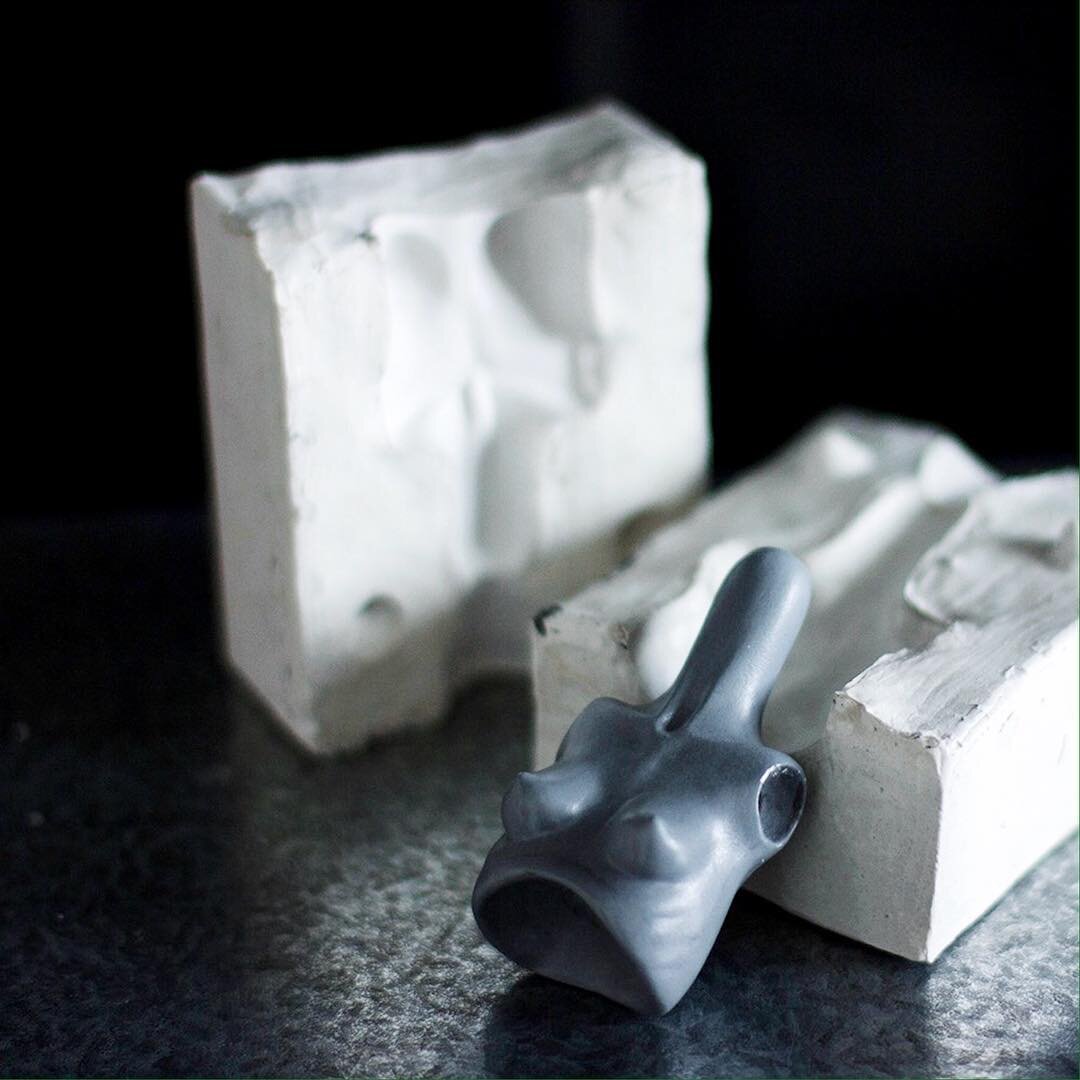Making plaster molds for casting porcelain BJD
Mold making is a necessary step if you want to create porcelain dolls. It is a very tedious and long process, requiring some math and spatial thinking. But once you understand fundamental techniques, it becomes less intimidating. In this article, I’ll walk you through some basics and shed some light on mold making for porcelain dolls.
This post contains affiliate links and I will be compensated if you make a purchase after clicking on my links. I wouldn’t promote anything I don’t absolutely love!
Materials
Good quality plaster - an essential part of mold making. I usually use Plaster of Paris or pottery plaster that you can get in your local ceramics store. Don’t use construction plaster, which is a building material and is not suitable for delicate work with porcelain.
Plasticine - non-hardening modeling compound. Since plaster molds are usually two-piece or three-piece molds, you need plasticine for covering up part of the prototype where you don’t want the plaster to get in.
Mold box - it’s easy to make one yourself from wood boards or some cardboard. Make sure it’s water-resistant!
Release agent - you can use simple vaseline (petroleum jelly) or purchase a release agent formulated especially for mold making.
Preparation
The first time I’ve made molds, I’ve struggled with this the most. It took all my brainpower to figure out how to define the parting lines and decide how many parts make up, for example, the head mold. Since plaster hardens almost to a rock, you have to determine if any indentation or protrusion could get stuck in the mold. This problem is called undercuts. You need to be careful and avoid undercuts by dividing your piece at the widest point. This line is called the parting line.
Parting lines on the head piece
Parting lines of the upper torso
It’s also a good idea to fill all the holes in your prototype with plasticine. For example, the nostrils of the model would fill up with the plaster and get stuck in the mold.
Different molds
As I’ve mentioned before, all of the molds for porcelain ball-jointed dolls are made from multiple pieces. Some of them ar two-piece others might require three or more pieces. In the preparation phase, you have to determine how many pieces your molds will need. I recommend to start with two-piece molds and work your way upwards. This way you’ll understand the process better and be prepared to tackle more difficult molds.
For the two piece mold, create a plasticine “bed” and place the pieces so plasticine covers half of the prototype. Make sure that the plasticine doesn’t surpass the parting line.
Construct the mold box and fill in all the gaps with plasticine to prevent any leaks. Pour in the plaster.
Once the plaster is set, remove the mold box, flip the mold and remove the plasticine. Do not remove the original pieces! Cover everything with release agent and repeat the process until you have a two-piece mold!
Most common issues
Undercuts - it’s probably the most common issue that will make your prototype stuck in plaster. If that happens - save the prototype, not the mold. You won’t be able to use a mold like this anyway, so don’t break the prototype trying to pull it out of hard plaster. Instead, while the plaster is still damp and not completely set, grab a metal chisel and hammer. Try to shatter the mold around the prototype. Be careful not to break your original sculpt and chisel the mold bit by bit until you can loosen up the prototype.
Not enough release agent - have in mind that plaster adheres to plaster very strongly. If you’ll use not enough release agent, opening the mold can become a nightmare.
Opening molds too soon - plaster hardens quite quickly, maybe in 10-20 minutes, depending on the plaster you use. But in the first 30 minutes, it still is very damp and brittle. You don’t have to wait overnight to open your molds, but by opening too soon you can break the mold you’ve worked so hard on. Due to chemical reactions, plaster gets very warm while it sets, I use it as an indicator when to open the mold. After ~25 minutes it’s still warm to the touch so I wait, while it completely cools down (~30-35min), and open it then.
I hope this was helpful and now you understand mold making a little bit better. It takes practice to be completely comfortable with the process. At first, I was having such a hard time figuring out parting lines or making multiple-piece molds. I was constantly worried about getting my prototype stuck in a brick of plaster. But practice makes perfect and I’m getting so much better at this! Let me know if you have any questions in the comments below.
Mold making online class is available now!
Mold making is a very tedious and long process, requiring some math and spatial thinking. But once you understand fundamental techniques, it becomes less intimidating. In this course, I'm going to walk you through the process of making plaster molds for each part of the ball-jointed doll. We're going to learn about materials, techniques and all the challenges that may occur. After this course, you'll be fully equipped to cast your own porcelain dolls!
SCULPTING A BJD FROM AIR-DRY CLAY: FIRST STEPS
I’m sculpting my second ball-jointed doll and I’ve decided to document all the process! A few years ago when I was just trying to understand how ball-jointed dolls actually work, there was almost no information about the topic. Now, people are sharing a little bit more on Instagram or Facebook groups, but it still is a very mysterious form of art. And if you want to try and sculpt a doll yourself, you’re kinda left on your own. With these posts, I hope to shed a little bit of light on the process and maybe inspire you to sculpt your own BJD!














